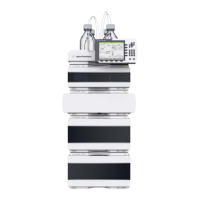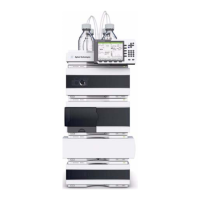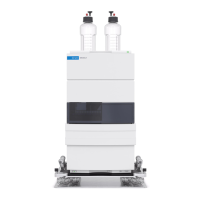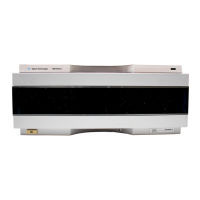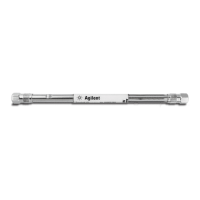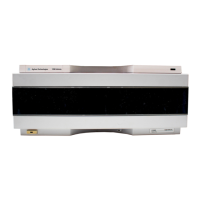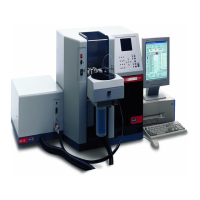1100 Series DAD and MWD User Manual 99
How to optimize the Detector 5
Furthermore, the absorbance is no longer strictly linear with concentration
for wavelengths at a steep slope of a compound’s spectrum.
Substances with fine structures and steep slopes like benzene are very rare.
In most cases the width of absorbance bands in the spectrum is more like
30 nm as with anisic acid (see Figure 54).
In most situations, a slit width of 4 nm will give the best results.
Use a narrow slit (1 or 2 nm) if you want to identify compounds with fine
spectral structures or if you need to quantify at high concentrations
(> 1000 mAU) with a wavelength at the slope of the spectrum. Signals with a
wide bandwidth can be used to reduce baseline noise. Because (digital)
bandwidth is computed as average of absorbance, there is no impact on
linearity.
Use a wide (8 or 16 nm) slit when your sample contains very small
concentrations. Always use signals with bandwidth at least as wide as the slit
width.
